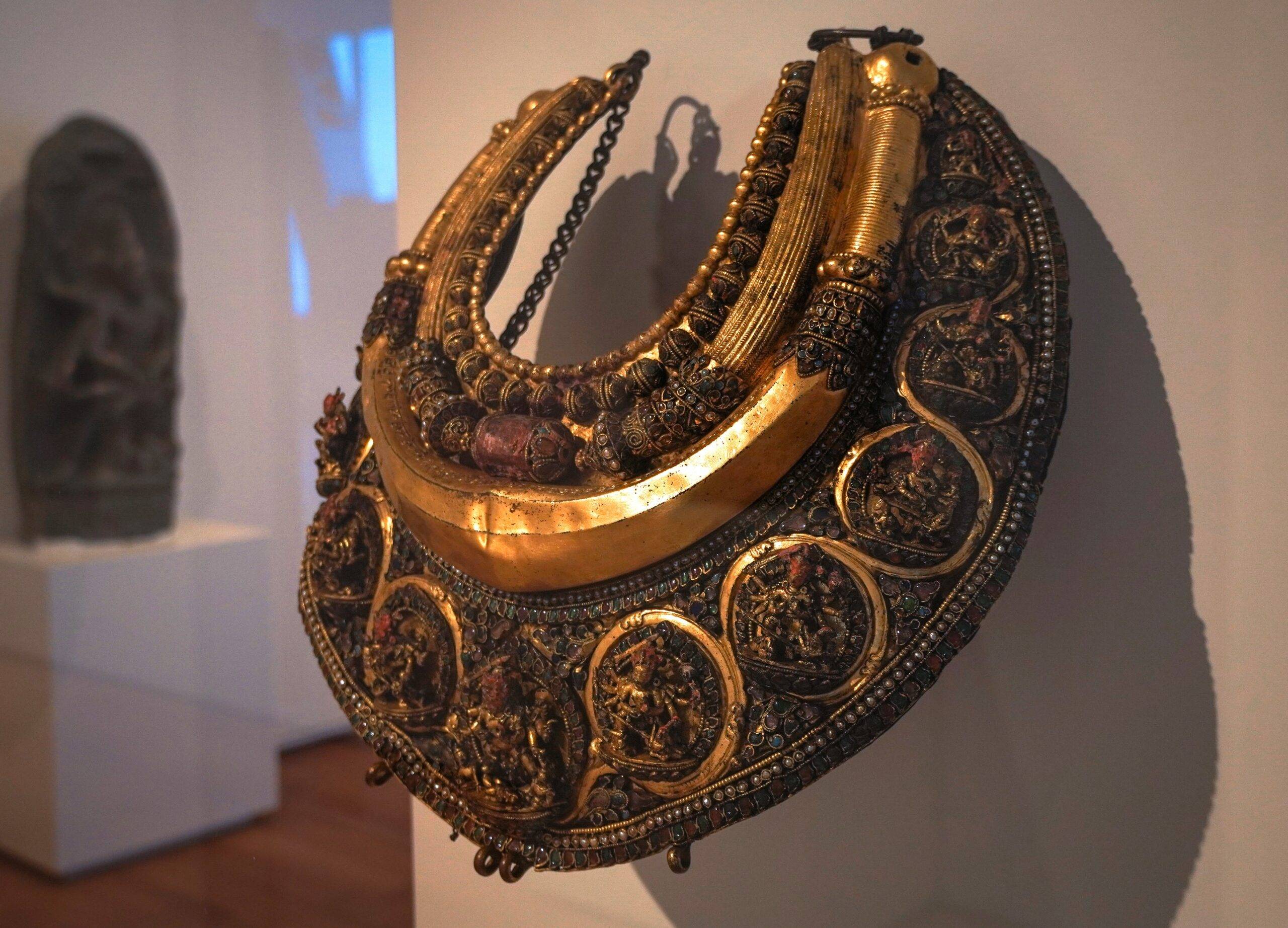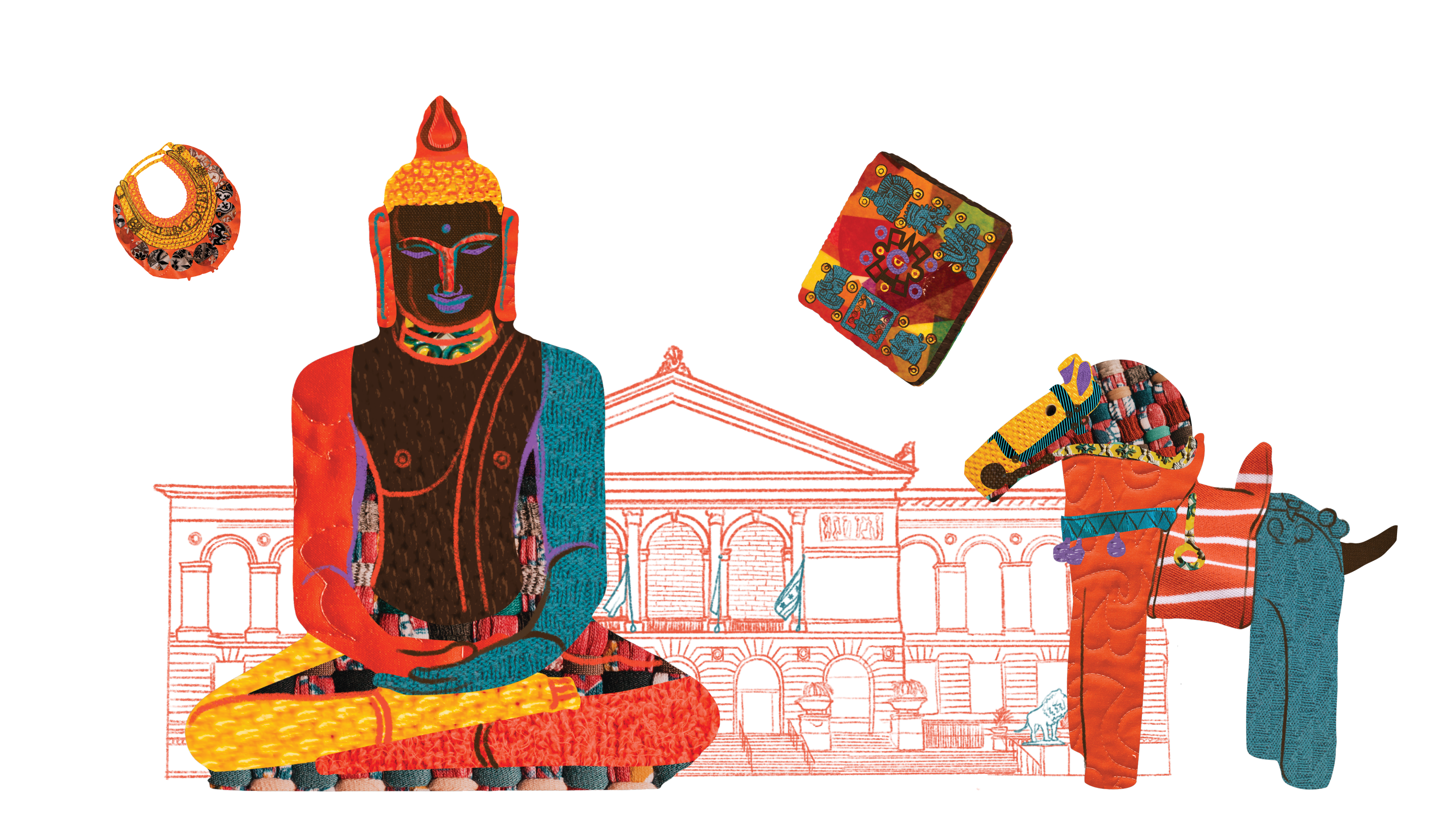
M. F. Husain. Hindu Triad, 2008–2011. Usha and Lakshmi N. Mittal. Photo © The Victoria and Albert Museum, London.
It has been 70 years since India gained its independence from the British Raj. To commemorate this milestone, The Art Institute of Chicago (AIC) is presenting “India Modern: The Paintings of M.F. Husain” to celebrate the artist as well as the evolution of Indian art, culture, and lifestyle.
The exhibit features eight of Husain’s 20th century triptychs completed before his death in 2011. They were commissioned by London-based Indian art collectors Usha and Lakshmi N. Mittal to create a series recognizing India’s rich diversity and history.
It is the first time that the United States has featured any of Husain’s work in a significant way, therefore making it a noteworthy breakthrough in the recognition of Indian culture within the U.S. However, for being such a momentous milestone, one is left wondering whether the presentation of the exhibit did the artist justice.

M. F. Husain. Indian Dance Forms, 2008–2011. Usha and Lakshmi N. Mittal. Photo © The Victoria and Albert Museum, London.
Husain is considered by many “The Picasso of India” due to his incorporation of Western-style, figurative techniques rendered in oil while still articulating the country’s cultural vocabulary. Known for his controversial aesthetic, Husain often depicted Indian goddesses in provocative positions. A rebel for his time, he went against Indian art conventions and was always at the center of controversy, constantly featured in the headlines of newspapers.
In 1996, for example, a Hindi monthly from Madhya Pradesh, Vichar Mimansa, ran an article with the title, “Ayeh Chitrakar Hai ya Kasai?” (Translation: “Is He a Painter or a Butcher?”) It accused Husain of disregarding Hindu culture by painting the goddess Saraswati, a highly respected Hindu goddess, in the nude. The fact that Hussain was born into a Muslim family added to the accusations he was expressing religious intolerance towards Hinduism. This prompted eight lawsuits against this artist for “promoting enmity between different groups.”
The triptychs display variations of Indian cultures over time. Hinduism, the dominant culture in India, is dictated by the rule of threes. At its core, there are metaphysical rulers: Brahma the creator; Vishnu the preserver; Shiva the destroyer. Together, they form the Trimurti, a personified monitor of the cosmic functions of creation, maintenance, and destruction.

M. F. Husain. Language of Stone, 2008–2011. Usha and Lakshmi N. Mittal. Photo © The Victoria and Albert Museum, London.
It is clear that Husain applies Indian philosophy to his art, but the artwork that comments on this the most, “Hindu Triad,” is displayed towards the back of the AIC exhibition making it almost dismissible to those who aren’t looking for it.
The paintings are surrounded by structures contextualizing their subjects. For example, Husain’s “Indian Dance Forms” is displayed at the center, next to relics and sculptures that depict Indian deities and civilians in various dance positions. Having a painting that compliments their themes lends the exhibit a sense of currency. Yet sporadically, through five sections of the AIC’s Asian collection, Husain’s work is shown in a way that fails to complement his significance: Hussain single-handedly changed the face of Indian art and the exhibit merges his paintings with chaotic displays of other Asian art, which provides no sense of differentiation between the diverse and unique cultures existing within the continent.
Was this an attempt of the Art Institute trying to check off their diversity and inclusion mark, to show the rest of the world that they care about representation? If so, using Husain to lump together artwork from unique and diverse cultures such as India, Thailand, and Burma seems like a stunt, not a step forward.
Still, no matter where you are standing, you are constantly drawn to the next one. Husain’s paintings do feel like black sheep compared to the rest of the Asian collection. Displayed next to relics composed of gray stone, gold, and brass, Husain’s vibrant works are a bold presence.
“India Modern: The Paintings of M.F. Husain” is on view at the Art Institute of Chicago, 111 S. Michigan Ave., through March 4, 2018.





















